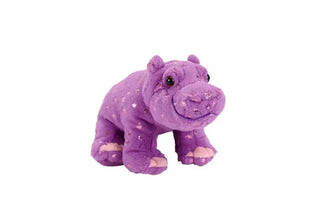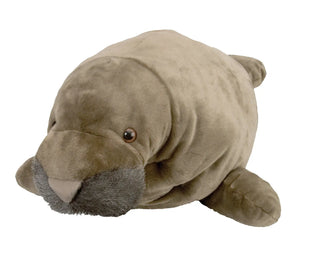Your Search For "hippopotamus" Revealed The Following:
Filter
Active Filters
INCLUDES:
- Age:3+
- Brand:Foilkins Jr
- Gender:Boy
- Gender:Girl
- Size:6"
Regular price
$10.40
$12.99
Save 20%
- Unit price
- / per
Pocketkins Eco Stegosaurus Stuffed Animal - 5"
$8.99
- Unit price
- / per
INCLUDES:
- Age:0+
- Brand:Pocketkins Eco
- Features:Eco
- Gender:Boy
- Gender:Girl
- Size:5"
$8.99
- Unit price
- / per
Hippo Stuffed Animal - 12"
$22.99
- Unit price
- / per
INCLUDES:
- Age:0+
- Brand:Cuddlekins
- Gender:Boy
- Gender:Girl
- Size:12"
$22.99
- Unit price
- / per
Artist Collection Wombat Stuffed Animal - 15"
$43.99
- Unit price
- / per
INCLUDES:
- Age:0+
- Brand:Artist Collection
- Gender:Boy
- Gender:Girl
- Size:15"
$43.99
- Unit price
- / per
Cuddlekins Eco Naked Mole Rat Stuffed Animal - 12"
$24.99
- Unit price
- / per
INCLUDES:
- Age:0+
- Brand:Cuddlekins Eco
- Gender:Boy
- Gender:Girl
- Size:12"
$24.99
- Unit price
- / per
Naked Mole Rat Stuffed Animal - 8"
$12.99
- Unit price
- / per
INCLUDES:
- Age:0+
- AnimalType:Naked Mole Rat
- Brand:Cuddlekins
- Gender:Boy
- Gender:Girl
- Naked Mole Rat
- Size:8"
$12.99
- Unit price
- / per
Cuddlekins Eco Sea Lion Stuffed Animal - 12"
$24.99
- Unit price
- / per
INCLUDES:
- Age:0+
- Brand:Cuddlekins Eco
- Features:Eco
- Gender:Boy
- Gender:Girl
- Size:12"
$24.99
- Unit price
- / per
Manatee Stuffed Animal - 15"
$22.99
- Unit price
- / per
INCLUDES:
- Age:0+
- AnimalType:Manatee
- Brand:Cuddlekins
- Gender:Boy
- Gender:Girl
- Manatee
- Size:15"
$22.99
- Unit price
- / per
Hippo Stuffed Animal - 8"
$10.99
- Unit price
- / per
INCLUDES:
- Age:10M+
- Brand:Huggers
- Easter
- Gender:Boy
- Gender:Girl
- Size:8"
$10.99
- Unit price
- / per
Hippo Stuffed Animal - 30"
$82.99
- Unit price
- / per
INCLUDES:
- Age:0+
- AnimalType:Hippo
- Brand:Cuddlekins
- Gender:Boy
- Gender:Girl
- Hippo
- Size:30"
$82.99
- Unit price
- / per
Manatee Stuffed Animal - 30"
$76.99
- Unit price
- / per
INCLUDES:
- Age:0+
- AnimalType:Manatee
- Brand:Cuddlekins
- Gender:Boy
- Gender:Girl
- Manatee
- Size:30"
$76.99
- Unit price
- / per
Rhino Stuffed Animal - 30"
$82.99
- Unit price
- / per
INCLUDES:
- Age:0+
- AnimalType:Rhino
- Brand:Cuddlekins
- Gender:Boy
- Gender:Girl
- Rhino
- Size:30"
$82.99
- Unit price
- / per
Platypus Stuffed Animal - 12"
$22.99
- Unit price
- / per
INCLUDES:
- Age:0+
- AnimalType:Platypus
- Brand:Cuddlekins
- Gender:Boy
- Gender:Girl
- Platypus
- Size:12"
$22.99
- Unit price
- / per
Javelina Stuffed Animal - 12"
$22.99
- Unit price
- / per
INCLUDES:
- Age:0+
- Brand:Cuddlekins
- Gender:Boy
- Gender:Girl
- Size:12"
$22.99
- Unit price
- / per
Pig Ecokins Jumbo
$97.99
- Unit price
- / per
INCLUDES:
- Age:0+
- Brand:Ecokins
- Gender:Boy
- Gender:Girl
- Size:30"
$97.99
- Unit price
- / per
Potbelly Pig Stuffed Animal - 12"
$22.99
- Unit price
- / per
INCLUDES:
- Age:0+
- AnimalType:Pot-bellied Pig
- Brand:Cuddlekins
- Gender:Boy
- Gender:Girl
- Pot-bellied Pig
- Size:12"
$22.99
- Unit price
- / per
You're viewing 1-16 of 16 results
















